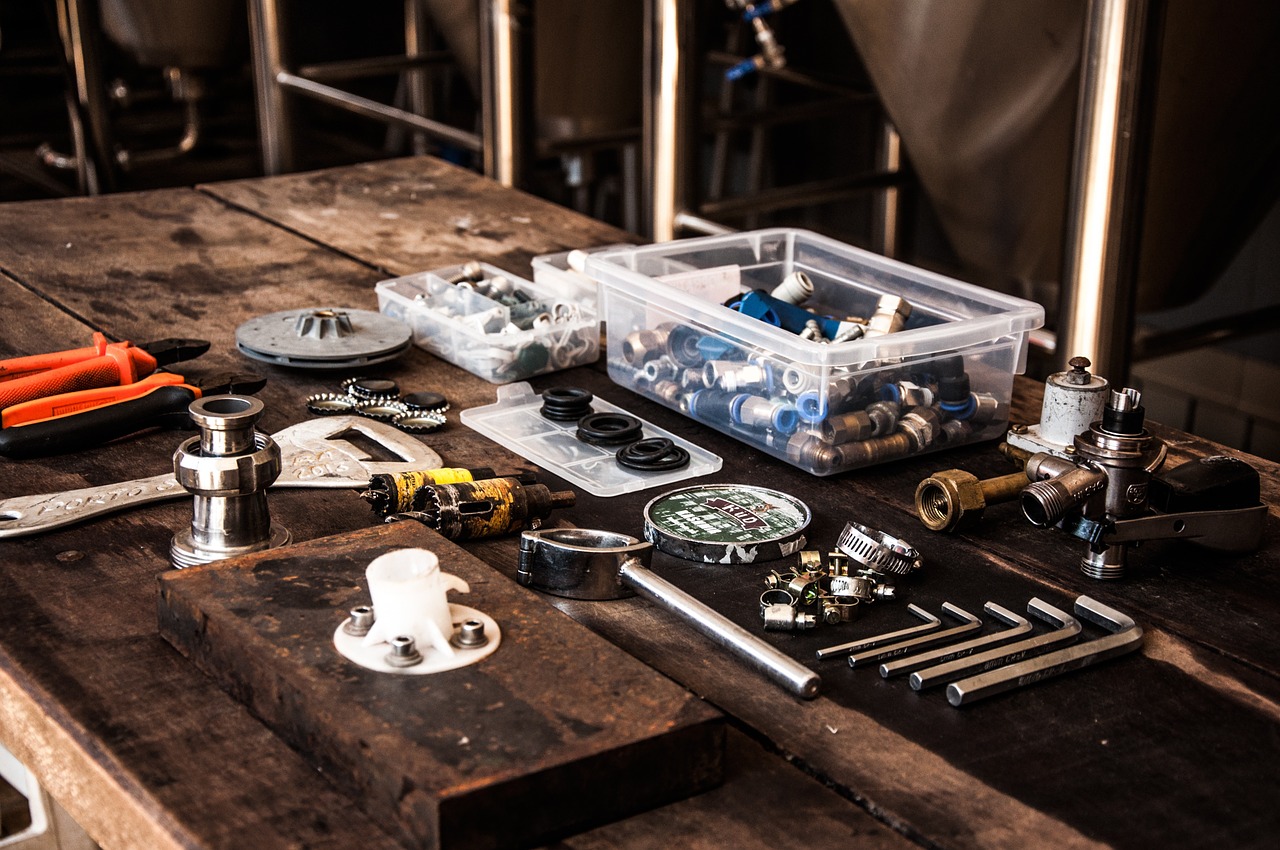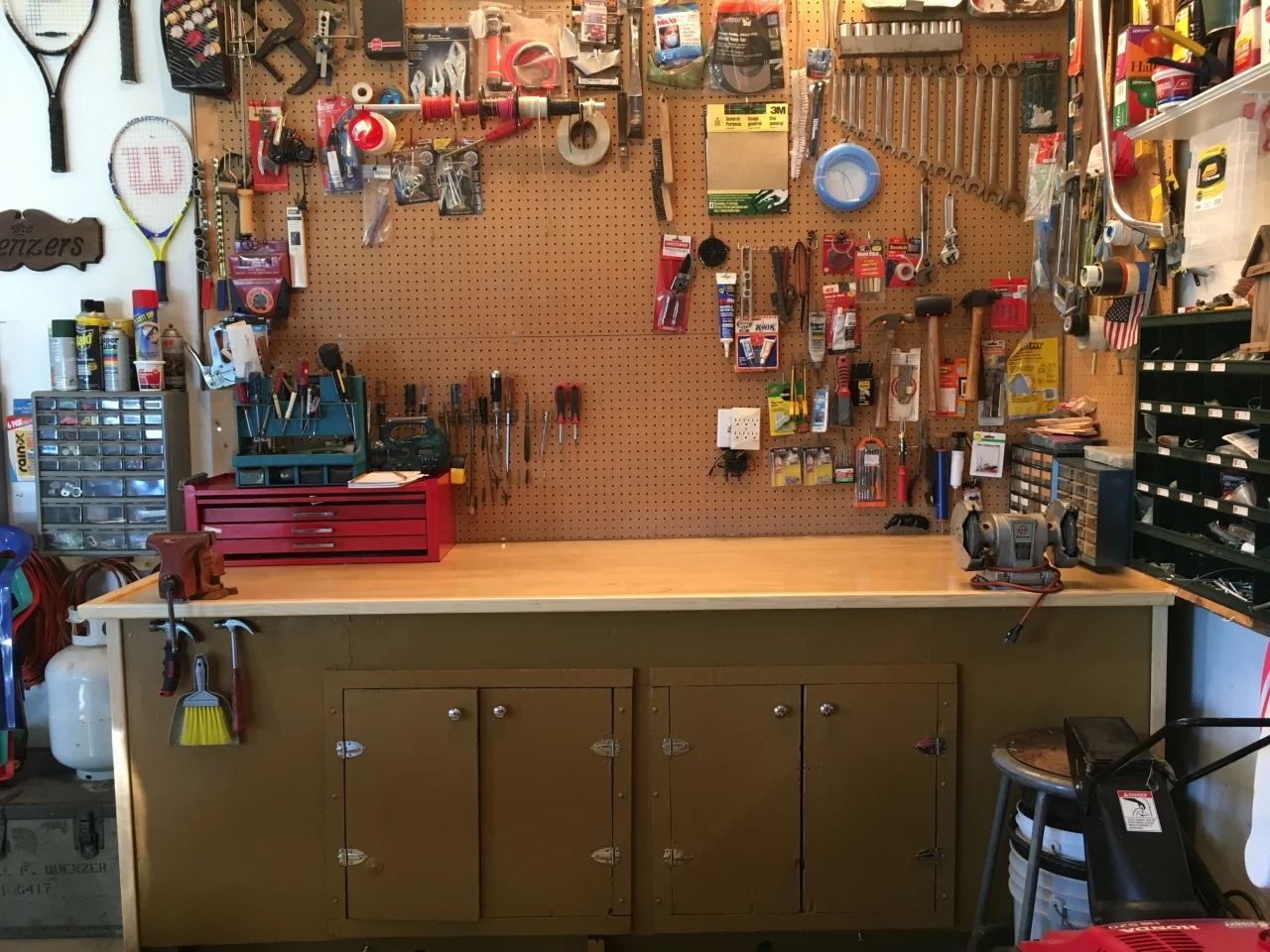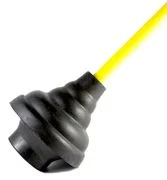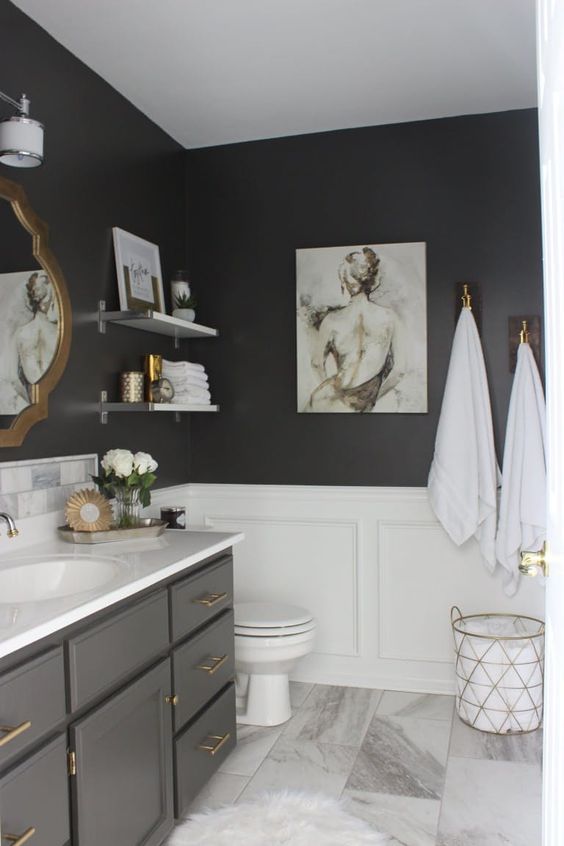Plumbing Glossary
RH Business Marketing Solutions
PLUMBING GLOSSARY
A
ABS-Acrylonitrile Butadiene Styrene: A rigid black plastic pipe used for Drain, waste, and vent lines.
Aerator : A device screwed into the end of a faucet spout that mixes air into flowing water, and controls flow to reduce splashing. It sometimes contains a baffle to reduce flow to 2.5 gpm.
Air Lock : Blockage in the flow of liquid, esp. on the suction side of a pump caused by an air bubble in the line.
Angle Stop : A shutoff valve between the water pipes and a faucet. Its inlet connects to the water supply pipe in a wall, and its outlet angles up 90 degrees toward the faucet. These are usually used to shut off water to a fixture in case of an emergency repair rather than daily usage.
Anode Rod : A sacrificial rod installed in a water heater that protects the tank from corrosion, helping to extend the life of the tank.
Anti-Siphon : Preventive device for the backflow of liquid into a system. Used on sprinkler systems to prevent water from trickling back into the supply that is feeding it.
B
BTU : British Thermal Unit-A unit of heat energy required to raise the temperature of 1 lb. of water 1 degree Fahrenheit.
Back Flow Preventer : A device to prevent water from traveling from one system back into any part of the main distribution system, usually by siphoning, esp. into a potable water supply. This is generally required for sprinkler systems, handheld showers, pullout faucet spouts, kitchen sprayers, etc.
Back Pressure : Pressure that resists the flow of fluid in a piping system.
Backwater Valve : Sewer line valve that prevents sewage from flowing back into the house.
Ball Check Valve : A valve that uses a ball to seal against a seat to stop flow in one direction.
Ballcock : The fill valve that controls the flow of water from the water supply line into a gravity-operated toilet tank. It is controlled by a float mechanism that floats in the tank water. When the toilet is flushed, the float drops and opens the ballcock, releasing water into the tank and/or bowl. As the water in the tank is restored, the float rises and shuts off the ballcock when the tank is full.
Basin Wrench : A wrench with a long handle with jaws mounted on a swivel that allows the jaws to reach and handle nuts to fasten faucets to a previously installed sink.
Blowbag : A drain-cleaning device consisting of a rubber bladder with a hose fitting on one end and a nozzle on the other. The device attaches to a water hose and is inserted into a clogged drainpipe. As water is introduced, it expands to grip the pipe, and releases pulsating bursts of water through the nozzle, forcing water through the pipe to clear the obstruction.
Branch : Any part of a drain system other than the main, riser, or stack.
Branch Vent : A vent connecting one or more individual vents with a vent stack.
C
Catch Basin : Large underground container, with a grate on the top, for collection of storm water run-off. It catches or collects dirt and other debris and prevents them from polluting streams and lakes.
Centerset : Style of bathroom faucet having combined spout and handles, with handles 4 inches apart, center-to-center. Also a single-handle faucet installed on 4 inches center-to-center faucet holes.
Check Valve : A type of backflow preventer installed in a pipe run that allows water to flow in only one direction.
Circuit Vent : Plumbing drainage system vertical vent which is run from the last two traps on a horizontal drain line to the main vent stack of a building drainage system.
Cistern : Rainwater storage tank, often underground.
Cleanout Plug : A plug in a trap or drain pipe that provides access for the purpose of clearing an obstruction.
Closet : Toilet.
Closet Auger : A flexible rod with a curved end used to access the toilet's built-in trap and remove clogs.
Closet Bend : A curved fitting mounted immediately below the toilet that connects the closet flange to the toilet drain.
Closet Flange : An anchoring ring that attaches to the closet bend and secured to the floor. The heads of closet bolts, used to secure the toilet in place, insert into slots in the closet flange.
Cock : A faucet or valve for regulating the flow of water.
Common Vent : Building drain system vertical vent which connects two or more fixture branches on the same level.
Compression Fitting : A kind of tubing or pipe connection where a nut, and then a sleeve or ferrule is placed over a copper or plastic tube and is compressed tightly around the tube as the nut is tightened, formin a positive grip and seal without soldering. Also a flexible connector that has a nut and gasket designed to attach directly to an SAE standard compression thread, without the use of a sleeve or ferrule.
Compression Valve : A type of valve that is often used for water faucets. It is opened or closed by raising or lowering a horizontal disk by a threaded stem.
Coupling : Vent pipe hood, which protects it from the elements.
Culvert : A pipe-like construction of concrete that passes under a road to allow drainage.
D
Desanco Fitting : A type of compression adapter that connects tubular brass fittings to PVC pipe.
Diaphragm : Flexible membrane in a valve that deflects down onto a rigid area of the valve body to regulate water flow from the supply lines. This eliminates the possibility of debris build-up within the valve.
Dip Tube : Tube inside the water heater that sends cold water to the bottom of the tank.
Direct Tap : Clamping device that allows a branch line to be drilled and tapped off a main line.
Discharge Tube : Outlet tube that connects a disposer or sump pump to the drain line.
Disposal Field : A series of trenches conveying the effluent from the septic tank laid in such a manner that the flow will be distributed with reasonable uniformity into natural soil.
Dishwasher Tailpiece : A flanged adapter connecting a basket strainer to the drainpipe with a dishwasher inlet.
Diverter : Valves which direct water to various outlets. They are used in showers, tubs, bidets, and sinks.
Drip Leg : A stub end pipe placed at a low point in the gas piping to collect condensate and permit its removal.
Drum Trap : An obsolete, non-vented drain lead or cast iron canister trap formerly used in sewer lines.
Duo Valve : A twin valve (hot & cold) with a single on/off lever used for washing machine boxes.
E
E. Coli : The common abbreviation of Escherichia Coli. One of the members of the coliform groups of bacteria indicating fecal contamination.
Earthquake Strap : A metal strap used to secure a water heater to the house frame or foundation.
Efficiency : A product's ability to utilize input energy, expressed as a percentage.
Effluent : Septic system liquid waste.
Escutcheon : A decorative metal flange or trim shield beneath a faucet handle that covers the faucet stem and the hole in the fixture or wall.
Expansion Tank : A tank designed to absorb excess pressure due to thermal expansion (e.g. closed system).
F
Fall/Flow : The proper slope or pitch of a pipe for adequate drainage.
Female Fitting : A fitting that receives a pipe or fitting. A fitting into which another fitting is inserted.
Finish Plumbing : Installation of plumbing fixtures to make the system usable.
Flapper Valve : The part on the bottom of the toilet tank that opens to allow water to flow from the tank into the bowl.
Float Ball : The floating ball connected to the ballcock inside the tank that rises or falls with changing water levels in the tank, and actuates or shuts off the ballcock as needed.
Floor Flange : A fitting that connects a toilet to a floor drain.
Flushometer : Toilet valve that automatically shuts off after it meters a certain amount of water flow.
Flushometer Tank System : Toilet flushing system that uses supply water pressure to compress water to provide a pressurized flush as opposed to a gravity flush.
Flux : Paste applied to copper pipes and fittings before soldering to help the fusion process and prevent oxidation.
Footprint : The area of floor space taken up by a water heater or other appliance.
French Drain : A covered ditch containing a layer of fitted or loose stone or other pervious material.
G
Gas Cock : Plug valve installed the main gas line and an appliance.
Gas Control : Device used to regulate gas pressure on a water heater.
Gate : A device that controls the flow in a conduit, pipe, or tunnel.
Gate Diverter : The pop-up lever on a tub faucet that activates the diverter valve.
Gravity Operated Toilet : A toilet that relies on the natural downward pressure of water in a toilet tank to flush the toilet effectively.
Gray Water : Waste water from sinks, showers, and bathtubs, but not toilets.
H
Horizontal Branch : Lateral drain pipes that run from plumbing fixtures to the waste stack in a building or in the soil.
Horizontal Run : The horizontal distance between the point where fluid enters a pipe and the point at which it leaves.
Hose Bibb : An outdoor faucet, also used to supply washing machines.
House Trap : U-shaped fitting with two adjacent cleanout plugs visible at floor level if main drain runs under floor.
Hubless (No-Hub) : Cast iron drainage pipe with neoprene gaskets and clamps.
Hydronic : System of forced hot water.
I
Indirect Wastes : Waste pipe used to convey gray water by discharging it into a plumbing fixture such as a floor drain.
Instantaneous Water Heater : A type of water heater that heats water as it flows through a heat exchanger coil.
J
Jet : An orifice or other feature of a toilet that is designed to direct water into the trapway quickly to start the siphon action.
Johnni-bolts : Closet bolts, used to mount toilet bowls to the closet flange.
K
Knockout Plug : PVC test plug.
L
Lavatory (Lav) : A fixed bowl or basin with running water and drainage for washing. Bathroom sink.
Leach Field : Porous soil area, through which septic tank leach lines run, emptying the treated waste.
Leader : Pipe carrying rainwater to the ground or sewer.
Lock Nut : Nut fitted into a piece of pipe and screwed onto another pipe to join the two pieces
M
Main : The primary artery of supply of the water supply or drain system in which all the branches connect. In the case of drains, known as the Main Vent.
Male Threads : Threads on the outside of pipes and fittings.
Malleable Fittings : Fittings made of metal which is soft and pliable.
Manifold : A fitting that connects a number of branches to the main; serves as a distribution point.
Mechanicals : The wiring, plumbing and heating and cooling systems in a building; also the components with moving parts such as furnaces, plumbing fixtures, etc.
Multi-Stage Pump : A pump that has more than one impeller.
N
Nipple : A short length of pipe installed between couplings or other fittings.
No-Hub Connector : A connector for no-hub iron pipe consisting of a rubber sleeve and a stainless steel band secured by hose clamps. A variation, a neoprene sleeve with two adjustable steel bands, is used for connecting dissimilar materials, as when connecting new plastic pipe to an existing cast-iron drainpipe.
O
O-Ring : Round rubber washer used to create a watertight seal, chiefly around valve stems.
Oakum : Loosely woven hemp rope that has been treated with oil or other waterproofing agent; it is used to caulk joints in a bell and spigot pipe and fittings.
Outlet Sewer : Pipe section in a septic system which runs between the septic tank and the drainage field.
P
PVC : Polyvinyl chloride. A rigid white or cream-colored plastic pipe used in non-pressure systems, such as drainage, waste, and vent systems.
Packing : Fibrous material that is used on faucets to prevent leaks.
Packing Nut : Nut that holds the stem of a faucet in position & holds the packing material.
Peak Hour Demand : Time when the largest demand for hot water is needed.
Pipe Dope : Slang for pipe-joint compound. Substance applied to threaded fittings to create a watertight seal.
Pitch : Downward slope of a drain pipe in the direction of the water flow.
Plumb : Precisely vertical. Also to test for, or to make vertical. Also to perform plumbing work.
Plumber's Putty : Pliable, popular putty used to seal joints between drain pieces and fixture surfaces.
Plumbing Tree : Prefabricated set of drain waste, vent, and supply lines.
Pop-Up Drain : Type of drain assembly for lavatory and bath. When a lavatory lift rod or bath overflow plate lever is lifted, the pop-up drain closes so the lavatory or tub retains water.
Port : An opening in a burner head through which gas or an air-gas mixture is discharged for ignition.
Positive Displacement Pump : Called a PD pump. Gear, sliding vane, progressive cavity, lobe etc. the capacity determined by the pump speed. The maximum head is determined by the horsepower available and the casing strength.
Pressure Balance Valve : Shower mixing valve that automatically maintains balance between incoming hot and cold water supplies by immediately regulating fluctuations in pressure. As a result, temperature remains constant, though the outlet pressure may drop. Also known as an anti-scald valve.
Pressure Tank : Device used to pump water from a well.
Pressure Tubing : Tubing used to conduct fluids under pressure or at elevated temperatures or both, and produced to stricter tolerances than pipe.
R
Rated Storage Volume : Quantity of water stored in a tank.
Reamer : A grinding tool used to level or remove burrs from valve seats in faucets so that the valve stem will fit properly.
Recovery Capacity : The amount of water in gallons per hour raised 100 degrees F at a given thermal efficiency and BTU per hour input.
Reducer : A fitting that connects pipes of different sizes together.
Return Circulation System : Tempered water from or near the point of usage which eliminates waste of hot water used for long runs and adds storage to the system.
Revent : Pipe installed specifically to vent a fixture trap. Connects with the vent system above the fixture.
Reverse Trap Water Closet : A water closet having a siphonic trapway at the rear of the bowl, and integral flushing rim and jet.
Rigid Pipe : Pipe designed to transmit the backfill load to the foundation beneath the pipe. Rigid pipe must be supported on the bottom portion of the pipe.
Rim Holes : A series of small holes in the underside of a toilet rim, around the circumference of the bowl. Incoming water flows down into the bowl through these holes, creating a rinse effect or wash over the entire inner surface of the bowl.
Riser : A vertical metal or plastic tube or assembly that connects a faucet to the water supply stop valve. Usually made of copper. Metal Flex Risers are corrugated to facilitate bending. Also a supply line that rises from one story to the next.
Roof Flashing : Sheet metal installed at any break in a shingled roofline to prevent leaks. Also around sewer vents, fluepipes.
Rough-In : Installation of the drain, waste, vent, and supply lines in a structure to the proposed location of each fixture.
Rough-In Dimensions : The distance from a finished wall or floor to the center of the waste or supply opening or mounting holes on a plumbing fixture.
Run : A complete or secondary section of pipe that extends from supply to fixture or drain to stack.
S
Saddle Valve : A valve mounted on a pipe run by a clamping device, or fitting that taps into the side of a pipe, used to make quick connection to an existing line to provide a water supply for a low-demand device.
Sanitary Sewer : House drain that carries wastewater away from the house to a sewer system or septic tank.
Self-Rimming Sink : Sink with no metal ring that has a built-in lip of the same material which supports it in the vanity top.
Service Entrance : Pipe connecting the water company piping to the water meter.
Setting : Pumps' vertical distance in feet from the top of the well to the top of the pump.
Shroud : Color-matched component under a wall-mount lavatory that covers the drain outlet for aesthetic purposes.
Siphon-Vortex Water Closet : A toilet having a trapway at the rear of the bowl, integral flushing rim, and a water supply system with or without a jet, which does not feed directly into the trap.
Sleeve : Pipe which is passed through a wall for the purpose of inserting another pipe through it.
Slip Joint : A connection made with compression fittings.
Soil Stack : Largest vertical drain line to which all branch waste lines connect. This line carries waste to the sewer line.
Solder : Metal alloy that is melted to create a fused joint between metal pieces. Also the act of melting solder into the joint.
Spud : A threaded opening on the water heater tank. Also a tool for digging having characteristics of a shade and chisel.
Stack : The vertical main in the drain, waste, and vent system, extending one or more stories.
Stand Pipe : Open vertical pipe that receives water from a washing machine. Also the vertical pipe run supplying water to a fire sprinkler system; also large vertical pipe into which water is pumped in order to produce a desired pressure; a high vertical pipe or reservoir that is used to secure a uniform pressure in a water-supply system
Static Lift : The vertical distance between source and discharge water levels in a pump installation.
Stop Valve : The shutoff valve under sinks and toilets. Allows water supply to be cut off to one fixture without affecting the water supply to other fixtures.
Straight Cross : Fitting that connects four pipes of the same diameter.
Sump : A pit or pool for draining, collecting, or storing water. A chamber which provides water to the pump.
Sweating : Slang term for soldering. Also formation of condensation on the outside of pipes or toilet tanks.
T
T & P Valve : Temperature & pressure relief valve. A safety device used to expel excess pressure or heat from inside a tank.
Tailpiece : Section of pipe that runs between a fixture outlet and the trap.
Tail Pipe : The pipe added below the jet assembly, in a weak well application.
Tank : Fixture reservoir for flush water. On a conventional toilet, the ballcock, flush valve, and trip lever are installed in the tank. A tank lid closes the top tank opening.
Tank Cross : A double-tee-shaped fitting installed between a shallow well pump and the bladder tank with integrated valve and gauge fittings, and an outlet for a pressure-relief valve.
Tap Tee : Cast iron tee with a threaded female side inlet.
Thermocouple : Small electric generator. Electron flow between the hot junction of 1200 degrees F and cold junction of 600 degrees F creates millivoltage.
Thermostatic Valve : Pressure-balancing shower mixing valve with automatic temperature control. When temperature or pressure fluctuations occur at the water inlets, a thermal actuator adjusts the hot and cold ratio to maintain the original temperature setting.
Trap : Curved section of drain line that prevents sewer odors from escaping into the atmosphere. All fixtures that have drains must have a "P" trap installed. A toilet is the only plumbing fixture with an "S" trap.
Trap Arm : The waste arm portion of a drainage trap.
Trap Dip : The U-bend portion of a drainage trap.
Trap Primer : A small feeder line connecting the cold water line directly to the drainage trap, which releases a small amount of water to the trap should it run dry to maintain the water seal.
Trap Seal : Height of water in a toilet bowl "at rest.". It provides the water seal which prevents sewer gases from entering the home. It is measured from the top of the dam down to the inlet of the trapway. Also referred to as deep seal.
Trapway : Channel in a toilet that connects the bowl to the waste outlet. It is where the siphonic action takes place. The trapway is measured in terms of the largest diameter ball which can pass through it. Also called the passageway.
Trip Lever : Flush handle and actuating arm on a toilet tank. Also the lever that opens and closes the drain on the bathtub waste and overflow.
U
Uni-flex : One piece stop and riser combination. One-piece supply.
Union : Three piece fitting that joins two sections of pipe, but allows them to be disconnected without cutting the pipe. Used primarily with steel pipe; never in a DWV system.
Usable Storage : Percentage of hot water that can be drawn from a tank before the temperature drops to a point that it is no longer considered hot.
V
Vacuum Breaker : An anti-siphon device that prevents the backflow of contaminated water into the water supply system.
Valve Dressing : Resurfacing a worn valve seat with a special tool. Stops leaks by providing a smooth sealing surface. Applies only to older compression style faucets.
Valve Seat : The non-moving part of a valve. Water flow is stopped when the moveable portion of the valve comes in contact with the valve seat.
Vent : A pipe that allows air into a drain system to balance the air pressure, preventing water in the traps from being siphoned off.
Vent Header : A vent pipe into which several vents connect. The vent pipe leads to the vent stack and out of the building.
Vent Stack : Upper portion of the soil stack above the topmost fixture through which gases and odors escape.
Venturi : A short tube with a tapered constriction in the middle that causes an increase in the velocity of flow of a fluid and a corresponding decrease in fluid pressure and that is used for creating a suction in a vacuum pump.
Viscosity : The resistance of fluids to flow, due to internal forces and friction between molecules, which increases as its temperature decreases.
Vitreous China : Ceramic materials fired at high temperature to form a non-porous body, having exposed surfaces coated with ceramic glaze fused to the body. This is used to form bathroom fixtures such as toilets, bidets, and lavs.
W
Washdown Water Closet : Water closet having a siphon trapway at the front of the bowl, and integral flushing rim.
Waste Arm : Drain extension pipe, usually to extend a sink drain into a wall.
Waste & Overflow : Drain assembly for a bathtub. The outlet at the top removes the overflow water during tub filling and the drain at the bottom removes wastewater when the tub is drained.
Widespread : A style of bathroom lavatory faucet having separate spout and handles, usually 8" from center of handle to handle.
Y
Yoke : Usually a brass casting that holds both the hot and cold valves and the mixing chamber for the water. May also refer to an assembly of copper or other metal which serves the same function.
Contributor: https://www.hypro-drains.com/glossary.php














